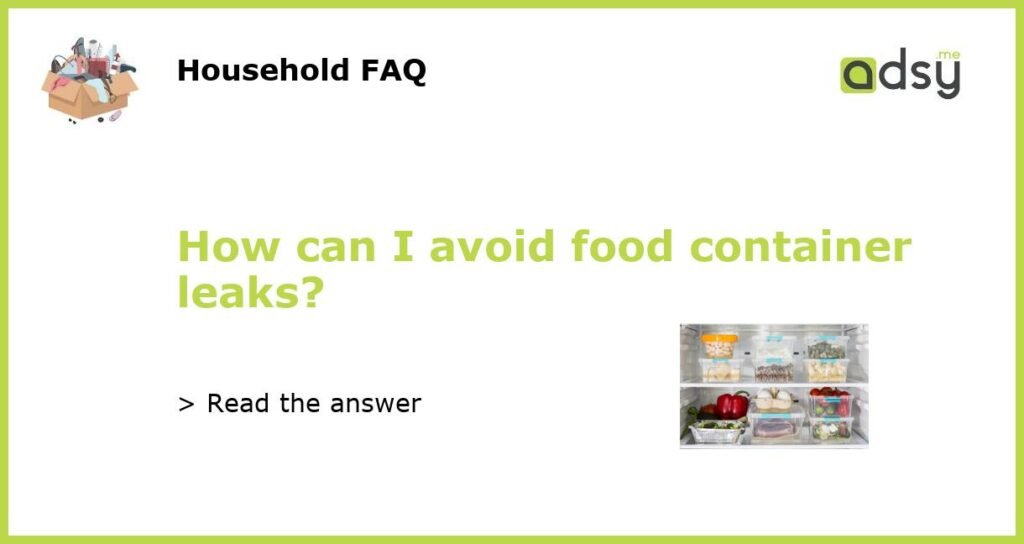Understanding the Causes of Food Container Leaks
Before we delve into how to avoid food container leaks, it’s crucial to understand what causes them. Leaks usually occur because of improper storage, poor-quality containers, and incorrect packaging techniques. Additionally, overfilling containers and stacking them onto one another are surefire ways to invite disasters that can lead to severe inconvenience and mess.
Choosing the Right Containers to Avoid Leaks
The first and most obvious solution to avoid food container leaks is to purchase the right containers. Glass containers are highly recommended because they are non-toxic, don’t retain stains, and are dishwasher safe. Additionally, glass containers are freezer and oven safe, making them perfect for storing all types of foods. If you prefer plastic containers, go for those marked with (PP) or (PET) since they are the most durable. However, it’s crucial to avoid using containers made of low-density or high-density polyethylene (LDPE/HDPE) since they crack easily and don’t close tightly.
Proper Storage Techniques
To prevent food container leaks, proper storage techniques are essential. Food containers should be stored in a secure, upright position and away from heat. Additionally, avoid overfilling containers, and ensure that you leave some space at the top to prevent spillage. Once you’ve filled the container, ensure that you wipe any spills or excess food from the edges to prevent moisture from accumulating and seeping out of the container.
Invest in Leak-Proof Containers
If you frequently experience food container leaks, it’s time to invest in leak-proof containers. These refer to containers that are specifically designed to prevent leaks and spills. They come in different shapes and sizes, and you can use them to store all types of foods. Leak-proof containers usually have specially designed lids with locking mechanisms that prevent any leaks or spills, even when the container is overturned.
Use Transparent Container Lids
Lastly, consider using transparent container lids, which make it easier for you to see the contents of the container without having to open it. With transparent lids, you can quickly identify the contents of the container and determine if it’s still safe to consume. Additionally, transparent lids eliminate the need to label the containers, which can fall off or get mixed up if handled carelessly.




![[10-Pack]Glass Meal Prep Containers -MCIRCO Food Storage Containers with Lifetime Lasting Snap Locking Lids, Airtight Lunch Containers, Microwave, Oven, Freezer and Dishwasher](https://m.media-amazon.com/images/I/41ZdkMs1ciL.jpg)

